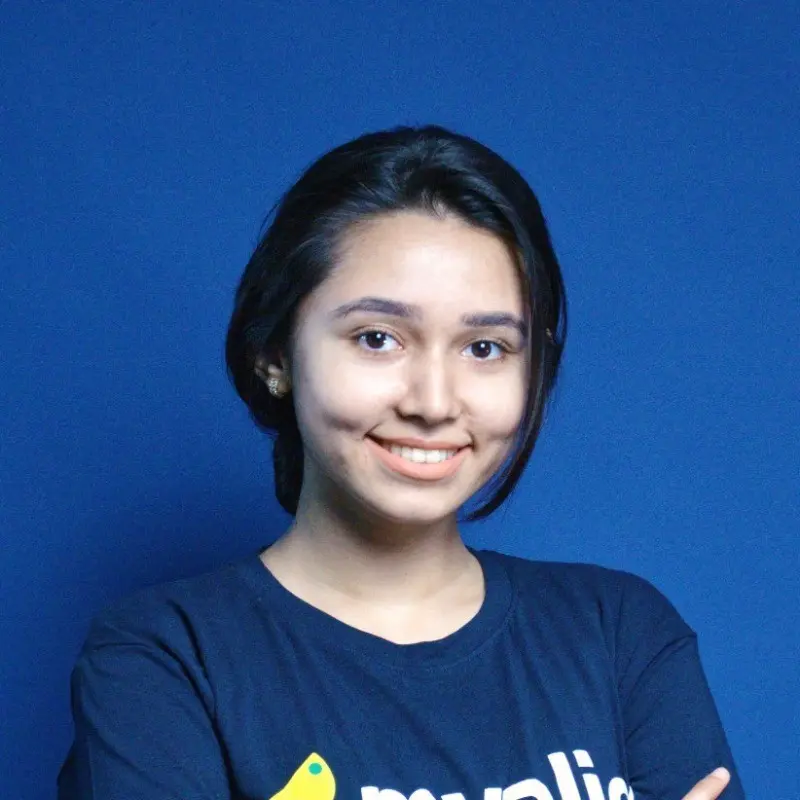If you’ve ever felt like Google Ads is eating up your budget faster than it’s delivering results, you’re not alone. Whether you’re a startup founder trying to hit your first $10K monthly recurring revenue (MRR) or a scrappy marketer juggling three roles, chances are you’ve stared at your ad dashboard thinking, “Is this really worth it?”
Here’s the thing: Google Ads still works, just not as smoothly as before.
Why? CPCs (Cost per Click) are climbing, competition is fierce, and for many brands, it’s becoming harder to stand out or scale efficiently. Especially if you’re not sitting on a massive ad budget or don’t have an agency fine-tuning every bid and keyword.
So, what are your options?
This guide is here to help you answer exactly that. We’ll explore some of the best Google Ads alternatives available in 2025. These platforms are easier on the wallet, often better suited for specific industries or goals, and (let’s be honest) sometimes just more fun to experiment with.
We’ll also talk about when it actually makes sense to stick with Google Ads, and how to know whether the issue is the platform… or just your setup. And if you’re considering hiring a Google Ads agency vs testing something new on your own, we’ve got a full breakdown for that too.
First look
But first, here’s a quick TL;DR if you’re just skimming:
| Goal | Best Alternative | Why It Works |
|---|---|---|
| Tight budget, $300/month | Meta Ads, Reddit Ads | Broad reach, strong retargeting, low CPMs |
| Scaling ecommerce brand | Pinterest Ads, TikTok Ads, Amazon Ads | High intent, visual-first, product-friendly |
| B2B or SaaS startup | LinkedIn Ads, Quora Ads, Microsoft Ads | Great targeting for roles, intent, and industry |
| High CAC (Customer Acquisition Cost) on Google | Meta Ads, Programmatic, YouTube | Better CPM/CPC, stronger creative leverage |
Ready to explore your options? Let’s dive into why so many startups are starting to diversify beyond Google Ads and what you need to look out for when choosing the right ad channel for your business.
Why people are searching for Google Ads alternatives
Let’s be honest.
For many startups, Google Ads used to be the obvious first step.
High-intent search traffic? Check.
Scalable targeting? Check.
Quick wins? Sometimes.
But things have changed. And fast.
If you’re feeling like your ad dollars just aren’t going as far as they used to, you’re definitely not imagining it. Here’s why more and more founders and growth teams are actively looking for Google Ads alternatives in 2025.
1. Costs are rising, but conversions aren’t
The average cost-per-click (CPC) on Google Ads has increased year over year, especially in competitive categories like fintech, SaaS, and ecommerce. That might be fine if conversion rates were keeping pace, but they’re not. In many industries, ROAS (Return on Ad Spend) is either flat or declining.
The result is something like this: you end up spending more to acquire the same customer. That’s not sustainable, especially for early-stage startups trying to prove traction or extend runway.
2. The platform’s getting saturated
Google Search is sort of overcrowded. Do a quick search for almost anything remotely commercial, and you’ll see four paid results at the top, followed by shopping carousels, AI overviews, and SEO-optimized content fighting for scraps of attention.
Even if you rank, you’re likely competing with established players who’ve dialed in their Quality Scores, built robust landing pages, and are bidding with massive budgets. For a new or small brand, breaking through that noise takes either a miracle, or a smarter play.
3. Clicks ≠ conversions anymore
Another painful truth: high-intent doesn’t always mean high-converting. Even when you get clicks from Google Ads, you might notice low engagement, bouncey sessions, and poor conversion rates. That’s because Google users are often comparing options i.e., they’re in research mode, not ready-to-buy mode.
Compare that to a well-timed TikTok ad with UGC (user generated content) that hooks attention, or a Quora ad shown alongside a question your ideal buyer is literally asking. In many cases, those channels drive more qualified traffic, even if it’s “lower intent” on paper.
4. Creative fatigue is real
Google Ads relies heavily on search text, basic visuals for display, and increasingly, AI-generated suggestions. If your product needs storytelling, visuals, or community engagement to shine, Google just isn’t the most flexible sandbox. Creative-first channels like TikTok, Meta, or Pinterest give you more room to experiment and emotionally connect.
5. Automation ≠ control
Google’s push toward Performance Max campaigns and smart bidding means more automation and less transparency. Sure, automation can be great. But if you don’t know what’s working and what’s not, or can’t test ideas quickly, you lose the ability to actually optimize.
As one founder put it: “I felt like I was just feeding money into a black box and hoping it worked.”
Bottom line? Google Ads might still be a part of your marketing mix. But it shouldn’t be the only channel you rely on. The startups winning in 2025 are the ones who know when to branch out, test new platforms, and find smarter ways to spend every dollar.
6. Your product is too new for search demand
If you're creating a new product category, people might not even know what to search for yet.
No amount of Google Ads optimization can fix the fact that there's no existing demand. And that’s not your fault.
In these cases, channels like Meta, TikTok, and YouTube are better for building awareness and educating your market before capturing demand.
7. You need more specific targeting than keywords allow
Sometimes, targeting by keyword isn't enough. Maybe you need to reach people based on life events (new job, new home), behaviors (recent app downloads), or niche interests (startup founders in fintech).
Google Ads struggles with deep behavioral and contextual targeting while platforms like Meta, LinkedIn, and Reddit can reach users based on these more specific traits and milestones.
What makes a good Google Ads alternative?
Let’s say you’re ready to move beyond Google Ads or at least diversify. The next big question is: what should you be looking for in a replacement?
Not every ad platform is created equal. Some work like Google with keyword-driven intent. Others lean heavily on visuals, behavior, or community-driven engagement. The best choice for you depends on your product, audience, and how much creative firepower you’ve got in your back pocket.
Here are the key factors that make an ad platform a real Google Ads alternative:
Targeting that fits how your audience actually shops
Google Ads is great at capturing people who are actively searching. But what if your audience isn’t searching yet or doesn’t even know they need your solution?
That’s where platforms with interest-based, behavioral, or contextual targeting shine. For example:
- Meta lets you target based on behaviors, interests, life events
- Reddit and Quora let you show up where conversations are happening
- LinkedIn gets super specific — job titles, industries, company size
Ask yourself: does this platform help me find buying intent — even if it’s not expressed as a keyword?
Flexibility in creative formats
Google’s mostly about text ads and static display banners. Great for performance, but not always for brand storytelling.
The best alternatives give you room to be creative. Think:
- Scroll-stopping UGC on TikTok
- Rich, visual pins on Pinterest
- Conversational ads on Reddit
- Explainer video ads on YouTube
If your product needs a demo, a story, or some emotional pull, Google alone won’t cut it.
Budget efficiency
It’s not just about lower CPCs. What you really want is:
- Lower CAC (Customer Acquisition Cost)
- Higher CTR (Click-through Rate, a sign your ad actually resonates)
- Better CPM (Cost per Mille/1,000 impressions, great for awareness)
Some platforms offer crazy low CPMs ($1–$3) compared to Google’s $5–$15. Others convert better per dollar, even if clicks are more expensive. You don’t always need cheaper, you need better ROI.
Match with your business type and funnel stage
Not every platform works for every startup. A few examples:
- SaaS founders may love Quora or LinkedIn (intent and B2B targeting)
- DTC brands do well on TikTok, Meta, Pinterest (scroll-friendly creative)
- Local services might benefit from Microsoft Ads or community-based platforms like Reddit
Also consider where in the funnel your ads will hit:
- Google = bottom of funnel (intent)
- Meta/TikTok = mid to top funnel (awareness, retargeting)
- Reddit/Quora = mid funnel (problem-aware users)
Ease of use and testing velocity
Some platforms are more beginner-friendly than others. Meta is easy to spin up quickly. Quora and Reddit are straightforward. LinkedIn and programmatic platforms? Bit of a learning curve.
If you’re early-stage with no media buyer or in-house growth team, pick something you can test fast and optimize without guesswork.
In short, a good Google Ads alternative should do one of three things:
- Reach your audience where Google can’t
- Tell your story in a more compelling way
- Get you better results for the same (or less) money
Now that you know what to look for, let’s walk through some of the best ad platforms to try in 2025 — starting with the ones that are already winning for startups like yours.
Best Google Ads alternatives in 2025
There’s no one-size-fits-all replacement for Google Ads. But depending on your goals, other ad platforms may offer different strengths such as more creative flexibility, niche targeting opportunities, or potentially more cost-efficient reach. Below, we’ve broken down the top alternatives with a focus on how startup founders like you can get the most out of each.
| Platform | Best For | Advantages |
|---|---|---|
| Meta Ads (Facebook + Instagram) | B2C brands, ecommerce, retargeting, storytelling | Massive reach, pixel retargeting, supports many formats, low-budget friendly, fast creative testing |
| Microsoft Ads (Bing) | B2B, SaaS, local services, older demographics | Lower CPC, Google import, underrated for B2B/local, low competition |
| LinkedIn Ads | B2B lead generation, SaaS, high-ticket services | Ideal for ABM (account-based marketing), great for lead magnets, strong segmentation |
| TikTok Ads | DTC brands, Gen Z, early-stage consumer products | Low CPMs, viral potential, strong engagement, great for top-of-funnel |
| Reddit Ads | Niche communities, developers, tech-savvy buyers | Subreddit targeting, ideal for technical/emerging categories, loyal users, lower CPMs |
| Quora Ads | B2B, SaaS, info products, educational funnels | Context-rich targeting, affordable CPCs, strong trust-building, great for repurposing content |
| Pinterest Ads | Ecommerce, lifestyle, visual-first brands (esp. women) | Intent-rich traffic, low CPMs, long shelf life, works well in fashion, food, wellness, home |
| Amazon Ads | Ecommerce brands selling on Amazon | Buyer-ready traffic, high conversion rates, sponsored placements for brand and products |
| YouTube Ads | Story-driven brands, video-led products, education | Great for awareness + retargeting, visual storytelling builds trust, high reach |
| Twitter Ads (X Ads) | B2B tech, crypto, finance, startups, trend-driven consumer products | Lower CPMs for B2B than LinkedIn, targeting by competitor followers, strong for launch amplification, thought leadership, and event-driven promotions. |
| Programmatic Platforms (e.g. AdRoll, The Trade Desk) | Omnichannel campaigns, retargeting, scaling growth | Cross-channel targeting, CRM syncing, strong for retargeting and brand recall |
1. Meta Ads (Facebook + Instagram)
Best for: B2C brands, ecommerce, retargeting, storytelling
Why it works:
Meta is still a powerhouse, particularly if your product is visual, shareable, or community-friendly. The real strength lies in targeting (interest-based + behavioral) and retargeting (via pixel and customer list matching). You can run everything from cold traffic to abandoned cart campaigns under one roof.
Advantages:
- Massive scale and reach across demographics
- Powerful retargeting with Meta Pixel
- Supports image, video, carousel, UGC, and more
- Works well even with small budgets (as low as $5/day)
- Great for testing creatives quickly
Watch out for:
- CPMs are rising due to iOS privacy changes
- Fatigue is common — creative needs frequent refresh
- Not as strong for B2B or technical products
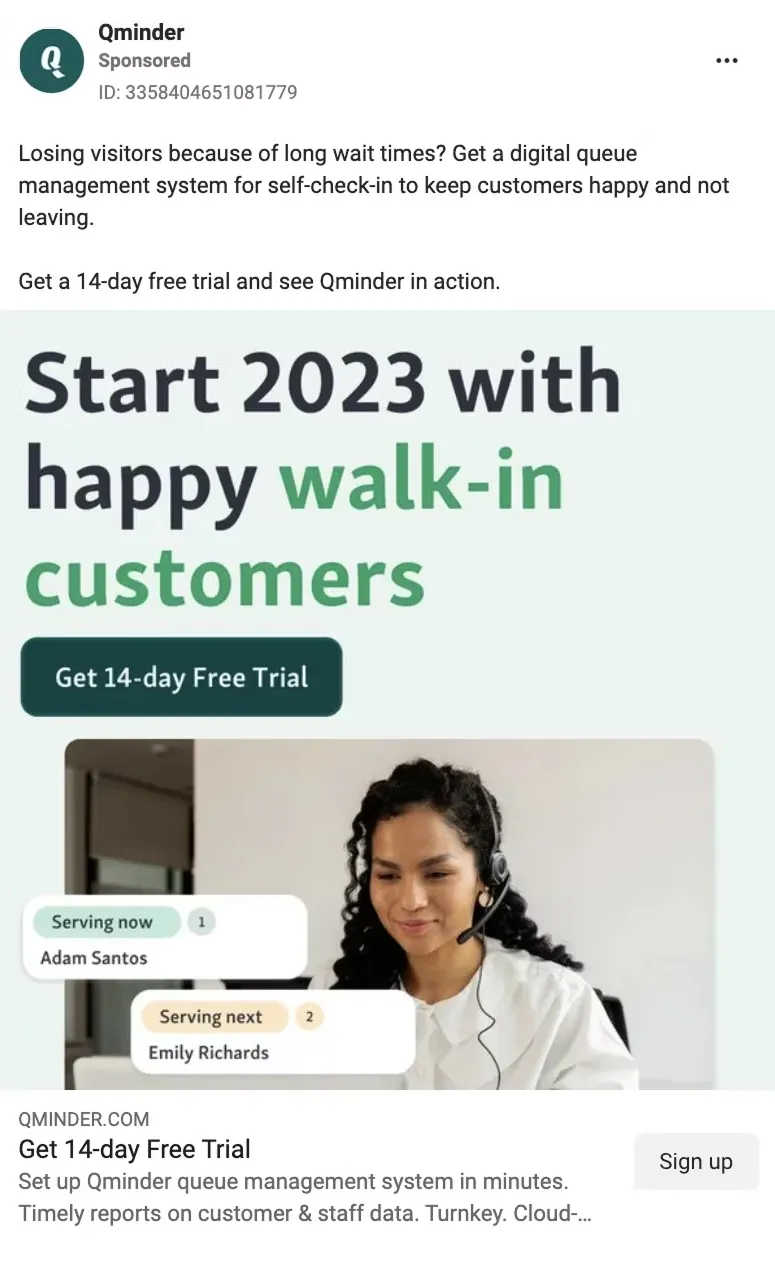
This is how a Meta Newsfeed Ad looks like
2. Microsoft Ads (Bing)
Best for: B2B, SaaS, local services, older demographics
Why it works:
Microsoft Ads is basically “Google Ads with training wheels and cheaper rent.” It still runs on keyword targeting, but CPCs can be 30–60% cheaper than Google. As a bonus, it serves across Bing, Yahoo, and MSN, with a user base that skews slightly older and more professional.
And here’s something most people miss: in many larger or more enterprise-focused companies, Bing is often the default (and sometimes the only allowed) work browser due to stricter IT security settings and heavy use of the Microsoft ecosystem.
That means if you're targeting decision-makers, corporate buyers, or professionals in Microsoft-heavy environments, Microsoft Ads can give you easier, cheaper access to them. Simply because that’s the browser they're using by default.
Advantages:
- Cheaper CPCs than Google Ads
- Import Google Ads campaigns directly
- Underrated for B2B and local lead gen
- Lower competition in many niches
- Bonus access to corporate, security-restricted environments
Watch out for:
- Lower search volume than Google
- Limited audience if your product skews younger
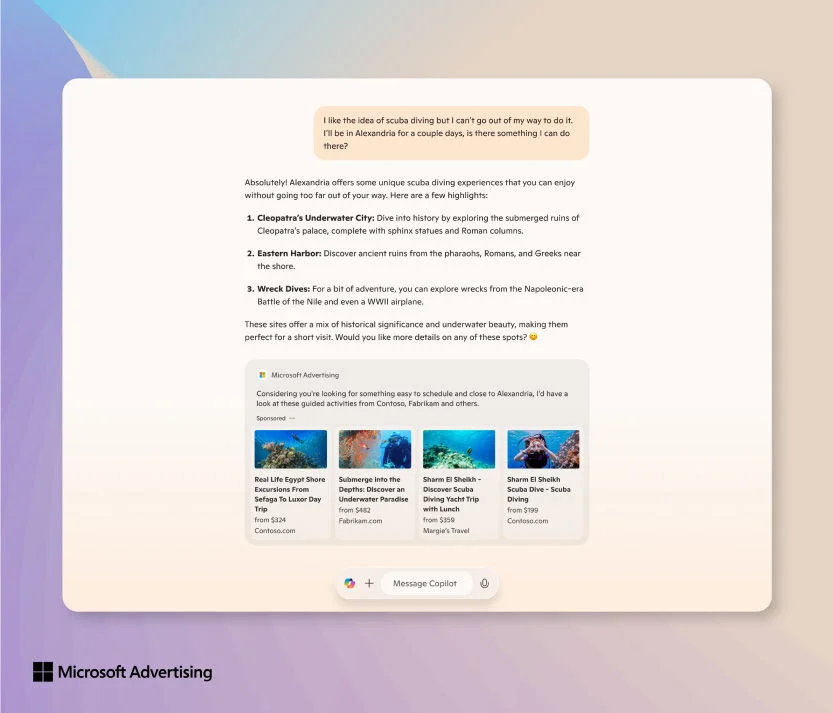
Example of a Copilot Ad - an exclusive Bing feature
3. LinkedIn Ads
Best for: B2B lead gen, SaaS, high-ticket services
Why it works:
No platform lets you get more specific with B2B targeting than LinkedIn. You can run ads to people with specific job titles at specific companies in specific industries. Yes, the CPM is high but if one lead = thousands in revenue, it’s often worth it.
Advantages:
- Ultra-precise B2B targeting
- Great for account-based marketing (ABM)
- Perfect for promoting lead magnets or product demos
- Easy to layer by company size, role, seniority
Watch out for:
- CPMs typically range from $70–$120 depending on audience targeting and ad format
- Doesn’t scale well unless your AOV (Average Order Value) is high
- Creative fatigue is real; needs polished messaging
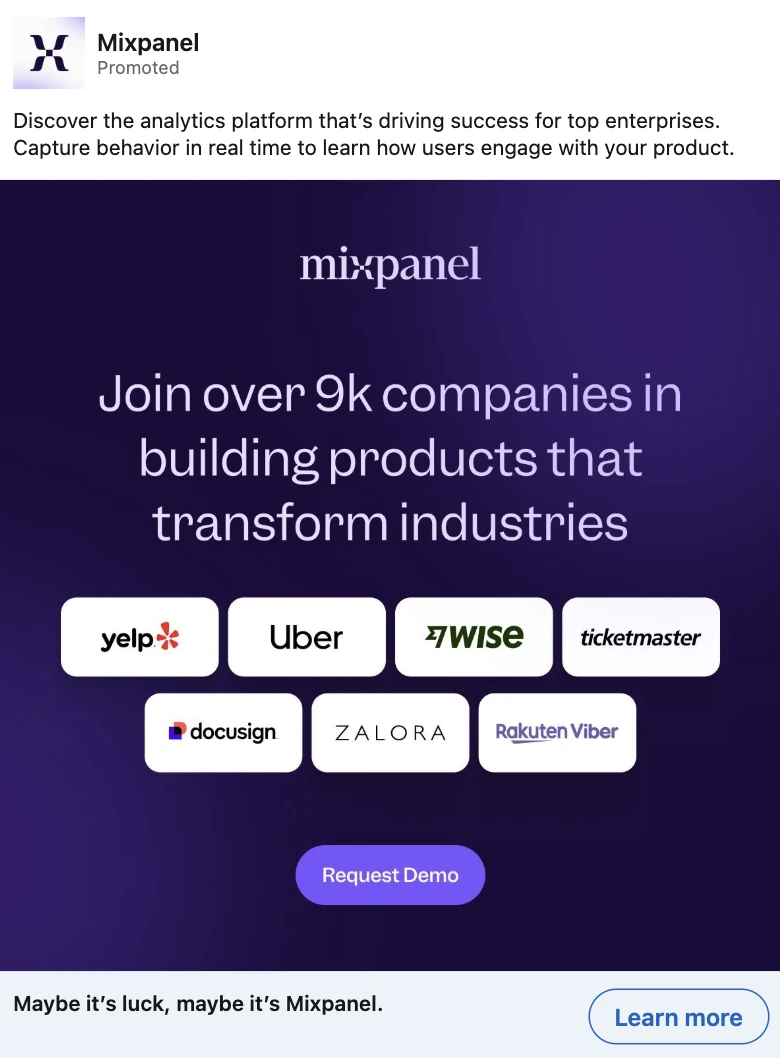
Example of a LinkedIn Ad
4. TikTok Ads
Best for: DTC brands, early-stage consumer products, Gen Z or Millennial-focused offerings
Why it works:
TikTok is less about keywords and more about capturing attention through story-driven, raw creative. The algorithm does the heavy lifting if your content feels native and scroll-stopping. UGC-style videos tend to crush it.
Advantages:
- Low CPMs for massive reach
- Viral potential from a single ad
- High engagement for short, visual content
- Great for brand awareness and cold traffic
Watch out for:
- Requires frequent creative testing
- Not ideal for B2B or complex sales funnels
- Doesn’t work well with generic, static ads
Here’s a quick tip: Film 3–5 versions of the same hook (first 3 seconds) with different angles. Run them all as Spark Ads and let the algorithm optimize.
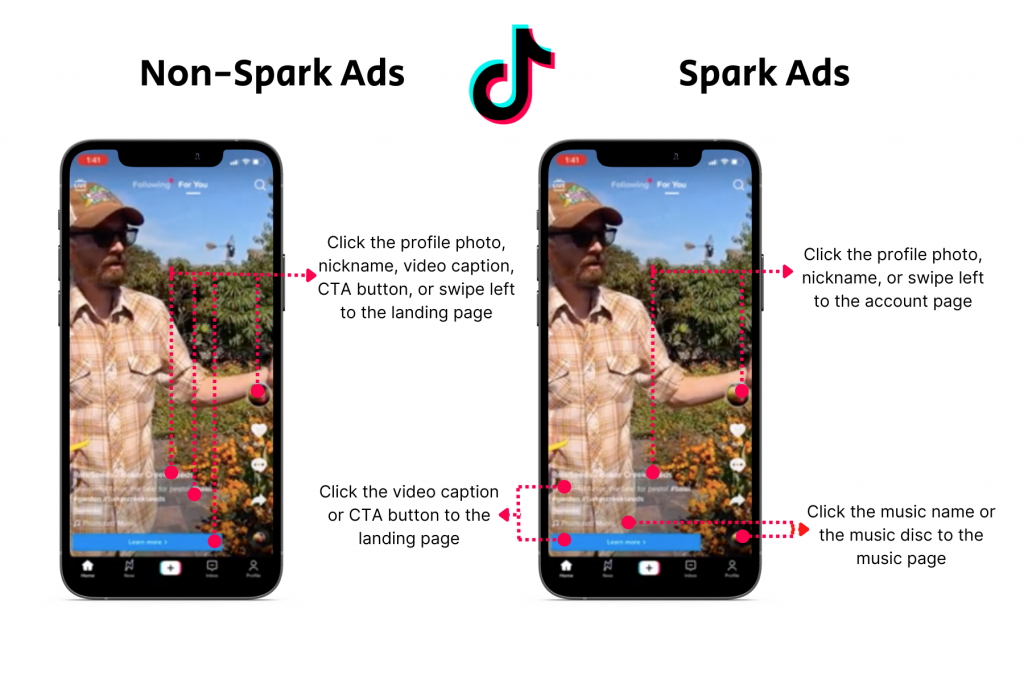
Differences between TikTok's Spark vs. non-Spark Ad
5. Reddit Ads
Best for: Niche communities, developers, tech-savvy audiences, opinionated buyers
Why it works:
Reddit lets you place ads directly inside the subreddits where your ideal users are already having unfiltered conversations. It’s the closest you can get to intent + community context.
Advantages:
- Laser-targeted placement by subreddit
- Ideal for technical products or emerging categories
- Users are smart, skeptical but loyal if won over
- Lower CPMs than Google and Meta
Watch out for:
- Reddit users hate feeling “sold to” — ads need to feel native
- Requires moderation to avoid negative sentiment
- Creative tone matters a lot
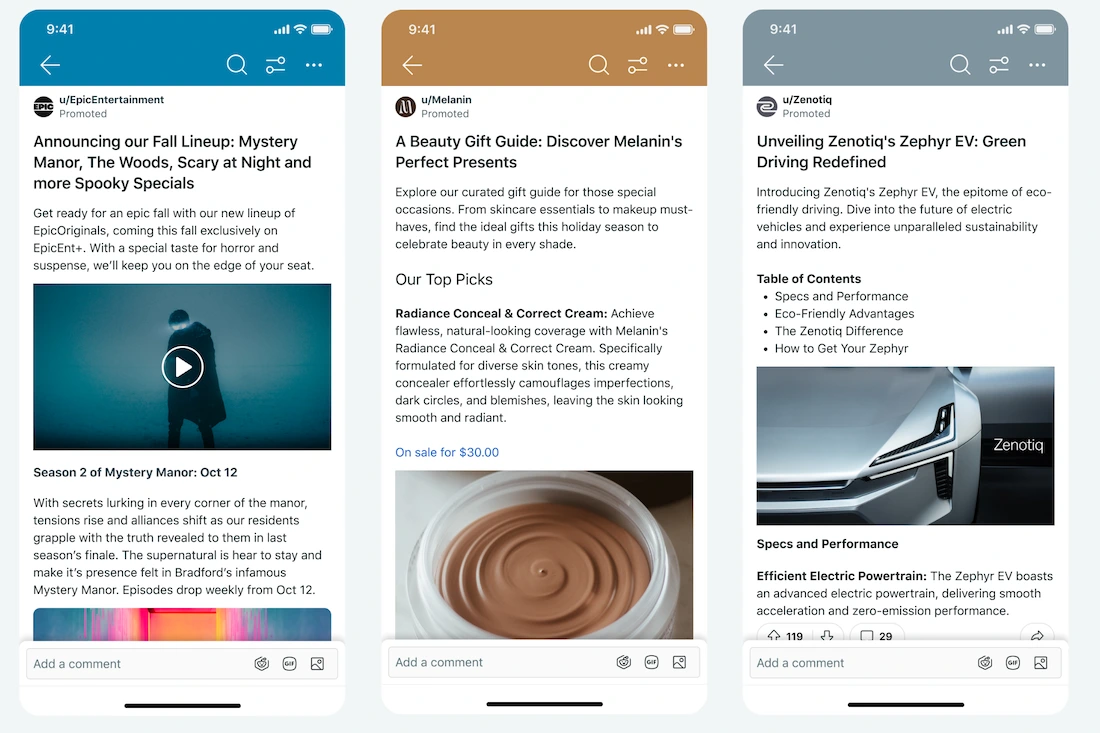
Examples of Reddit Ad
6. Quora Ads
Best for: B2B, SaaS, info products, expert positioning
Why it works:
Quora gives you a rare blend of intent + education. You can target specific questions, topics, or audience traits, and show up exactly when someone is researching your space.
Advantages:
- Context-rich targeting (e.g. “What’s the best CRM for startups?”)
- Affordable CPCs, high conversion potential
- Great for brand trust, especially in complex niches
- Easy to repurpose blog content into ad copy
Watch out for:
- Smaller scale compared to other platforms
- Less control over creative placement
- Attribution can be messy
When it comes to Quora, always run ads alongside the top questions your SEO (Search Engine Optimization) team is already targeting. This reinforces awareness and captures leads earlier in the funnel.
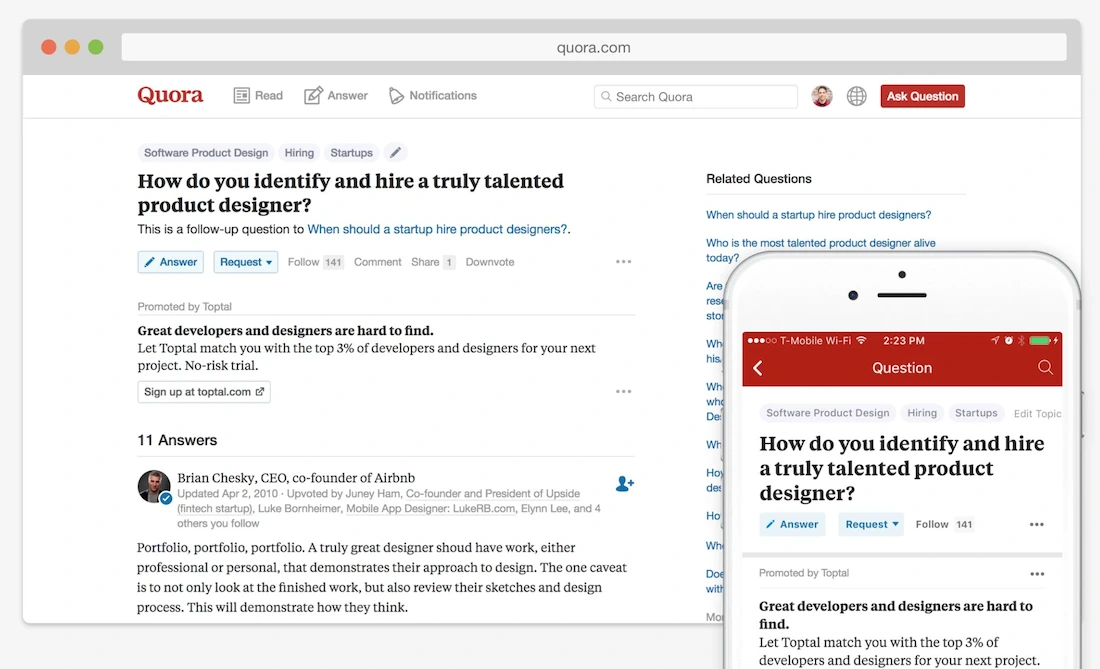
This is how a Quora Ad looks like
7. Pinterest Ads
Best for: Ecommerce brands, lifestyle products, visual-first content, female-skewed audiences
Why it works:
Pinterest can be a hidden gem if your product is beautiful, aspirational, or visually educational. People on Pinterest are actively searching, planning, and saving ideas, which gives you an edge when it comes to capturing mid-funnel intent (think: “best home office setup” or “gifts for plant lovers”).
Advantages:
- Intent-driven traffic with visual context
- High purchase intent in categories like fashion, home, food, wellness
- Long shelf life: Pins continue to resurface over time
- CPMs are typically lower than Meta or Google
Watch out for:
- Works best when your product imagery is strong
- Targeting can be broad if not set up properly
- Attribution takes time — results compound, not spike
Always treat Pinterest like a hybrid of SEO and paid. Create pins that match what people are searching for, and make sure your visuals feel native to the platform.
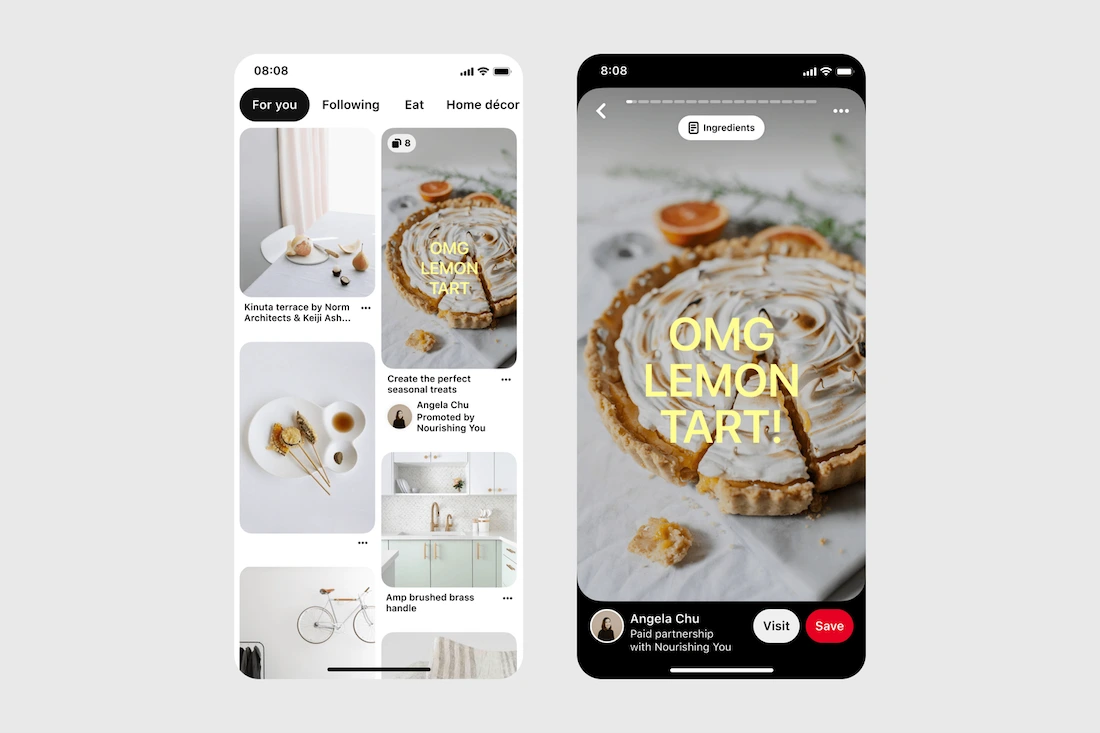
Example of a Pinterest Ad
8. Amazon Ads
Best for: Ecommerce brands that already sell on Amazon
Why it works:
If your product is listed on Amazon, this is a no-brainer. Amazon Ads target buyers with immediate intent — not just browsers or researchers. Sponsored Product and Sponsored Brand ads appear right where purchase decisions happen.
Advantages:
- Buyer-ready traffic = high conversion rates
- Ads show up on competitor listings and product searches
- Sponsored Brands boost your brand visibility on Amazon SERPs
- Full-funnel options from awareness to retargeting
Watch out for:
- Only works if you’re selling on Amazon
- You’re still paying Amazon’s cut on top of ad spend
- Requires solid product reviews and listings to convert
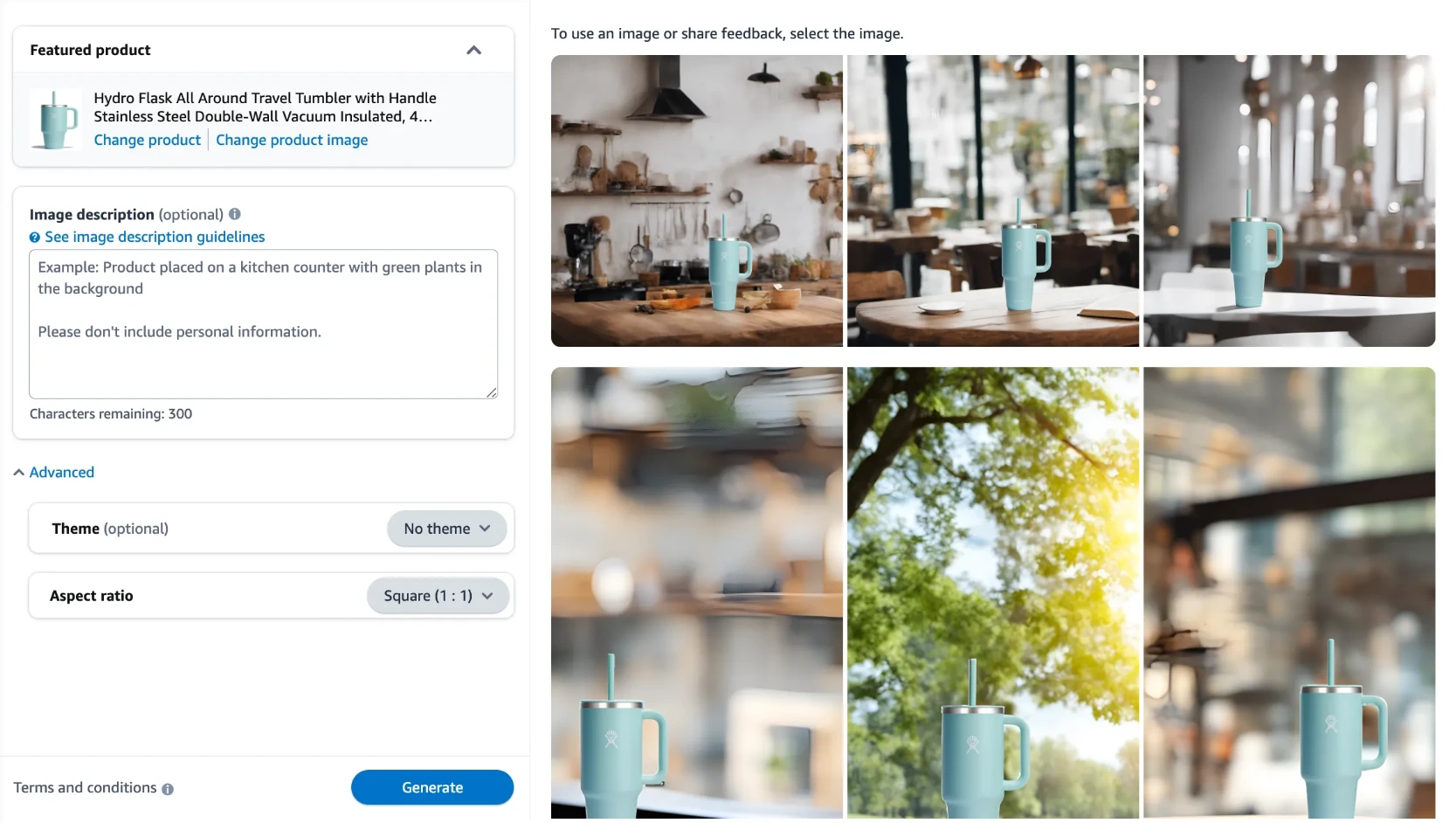
Amazon's native ad platform has advanced AI features
9. YouTube Ads (beyond Google Search)
Best for: Founders with story-driven products, strong video content, or educational hooks
Why it works:
YouTube isn’t just for top-of-funnel awareness anymore. With precise targeting, skippable in-stream ads, and retargeting options, it can also drive conversions, especially if your product shines through a compelling video demo or founder story.
Advantages:
- Huge reach + strong targeting (demographics, interest, custom intent)
- Great for brand-building and explaining complex products
- Pairs well with performance creatives (e.g. testimonials, walkthroughs)
- Visual storytelling boosts recall and trust
Watch out for:
- Requires well-produced video (not always cheap)
- View-through conversions can be tricky to track
- Creative fatigue sets in fast without variation
Here’s a great idea to get started: start with a 15–30 second founder-led demo or story ad. Keep it punchy, clear, and customer-focused. Use subtitles and a strong call to action early on.
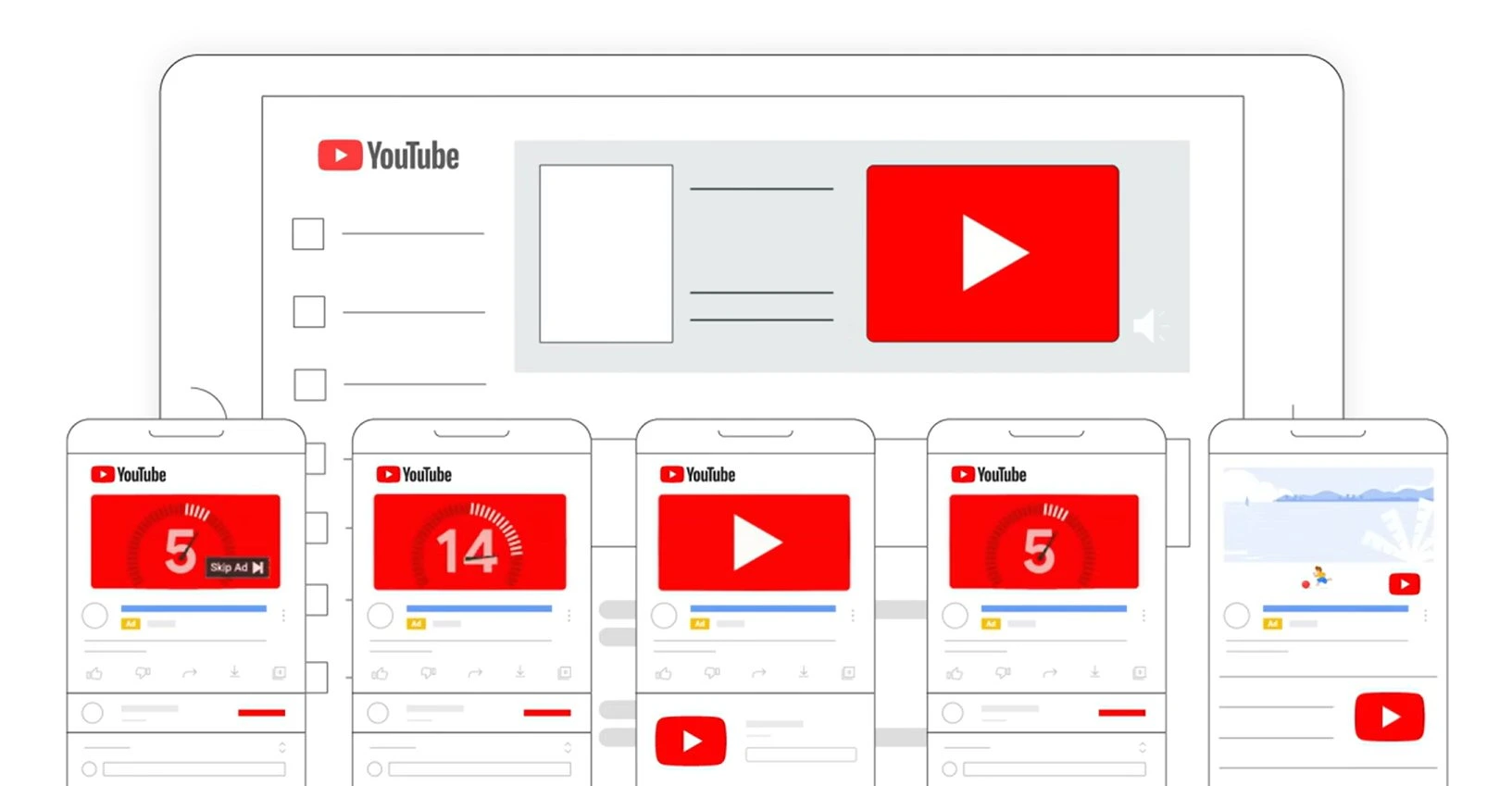
Types of YouTube Ad
10. Twitter Ads
Best for: B2B tech, crypto, finance, startups, trend-driven consumer products
Why it works:
Twitter (X) is a powerful platform if you need to reach engaged, opinionated audiences around real-time conversations. It’s especially effective for startups in tech, finance, crypto, or emerging spaces where thought leadership and fast trend adoption matter. Targeting by keywords, interests, followers, and conversations allows you to tap into specific communities quickly.
Advantages:
- Real-time targeting around news, trends, and conversations
- Strong for B2B, SaaS, fintech, and crypto audiences
- Lower CPMs than LinkedIn for B2B-style targeting
- Good for amplifying product launches, thought leadership, or event-driven promotions
- Ability to target by competitors' follower bases
Watch out for:
- Ad performance can be volatile depending on platform changes and algorithm tweaks
- Creative fatigue happens faster — users scroll quickly
- Audience quality can vary if targeting isn’t dialed in
- Brand safety can sometimes be a concern depending on where your ads appear
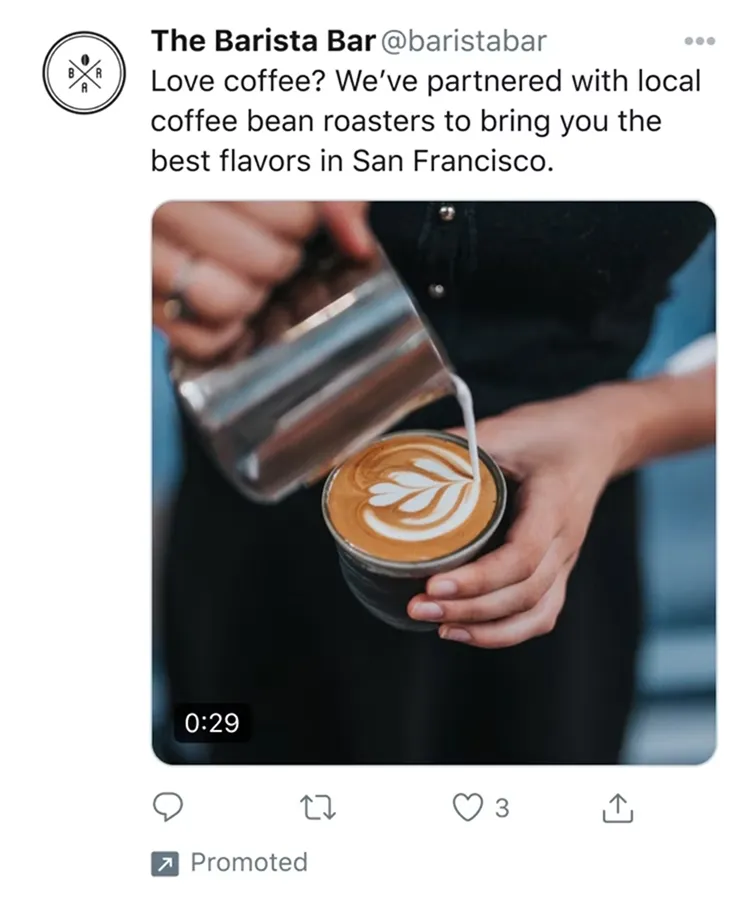
Example of a Twitter Ad
11. Programmatic platforms (AdRoll, The Trade Desk, etc.)
Best for: Retargeting, omnichannel presence, full-funnel campaigns
Why it works:
Programmatic advertising lets you show up almost everywhere across websites, apps, OTT, native placements, and more using automated bidding and targeting. It’s ideal if you want to run retargeting campaigns across multiple touchpoints without being tied to Google’s Display Network.
Advantages:
- High control and cross-platform retargeting
- Great for reinforcing brand recall over time
- Works well with dynamic product feeds and CRM data
- Scales as you grow — from startup to mid-market
Watch out for:
- Can feel overwhelming without a dedicated media buyer
- Attribution across channels can get fuzzy
- Requires some budget to test properly
If you already have site traffic and email leads, use AdRoll or similar to retarget those users across the web without being locked into Google’s ecosystem.
Bonus: Emerging ad channels to keep an eye on
- Snapchat Ads: Great for Gen Z and impulse-driven consumer products. Low CPMs and visual UGC-style creatives work best here.
- Spotify Ads: Audio ads are great for brand awareness. Useful if you're targeting commuters or podcast listeners in specific regions.
- Discord Server Ads (via partnerships): Niche community access through server sponsorships or partnerships. Works well for dev tools, gaming, or Web3 startups.
- Nextdoor Ads: Hyper-local advertising that works for service businesses or community-based offers. Great for real estate, home, or health.
- Podcast Sponsorships (direct or programmatic): Not a platform per se, but programmatic podcast ads let you target niche listeners. Good for B2B thought leadership or DTC lifestyle brands.
Should you work with a Google Ads agency or switch platforms?
This is one of the biggest questions early-stage startups face when their Google Ads performance plateaus. You're spending money, not seeing results, and wondering:
“Is the platform wrong for us? Or are we just running it badly?”
“Would hiring a Google Ads agency fix this? Or, would it just burn more budget?”
It can be a high-stakes decision if you only have a few hundred or thousand dollars per month to spend. So let’s break it down properly: when to bring in expert help, when to walk away from Google Ads entirely, and what to do instead if you're in that in-between zone.
What a Google Ads agency actually does (and doesn’t)
A good agency isn’t just there to “set up some keywords and let it run.” They're performance engineers aka optimizing every part of your funnel. Here's what they typically bring to the table:
- Campaign structure: They’ll create tightly themed ad groups, manage match types, and eliminate keyword overlap so you're not bidding against yourself.
- Bidding strategy: From manual CPC to target CPA and ROAS, agencies understand when to let Google automate and when to take the wheel.
- Ad copy testing: They constantly A/B test headlines and descriptions to improve Quality Score and CTR.
- Landing page alignment: They’ll give feedback (or even run tests) on how your landing pages are affecting conversion rate.
- Conversion tracking setup: They make sure your tracking is actually working, so you know what’s generating real leads or sales.
- Budget pacing: They monitor daily and monthly spend to avoid burning your budget early or underdelivering mid-month.
- Account clean-up: They prune poor-performing keywords, pause wasted spend, and optimize over time.
But here’s what a Google Ads agency can’t fix:
- If your product-market fit isn’t clear, no agency can fix that.
- If your offer is confusing or too broad, even perfect targeting won’t help.
- If people simply aren’t searching for what you sell (e.g. it’s a new category), Google Ads won’t generate demand but capture only.
So before hiring an agency, ask yourself:
“Are we seeing signs of life, but need help optimizing?”
or
“Have we tried everything and still can’t get traction?”
If it’s the latter, the problem is likely the platform.
Signs it’s time to switch platforms, not just optimize harder
There’s a point where you have to stop tweaking and start thinking bigger. Here are some signs that Google Ads may not be your channel right now:
- CPCs are outrageously high and you're still not converting. Some industries (like legal, SaaS, or insurance) see $10–$60 CPCs. If your lifetime value doesn’t support that, you’re fighting an uphill battle.
- Your audience isn’t keyword-driven. If you're in a category people don't know how to search for (think: new frameworks, tools, creative services), Google won't capture them. You need to build awareness first. This means platforms like Meta or TikTok.
- You're only getting junk leads. If your lead quality is poor and you’ve already tried fixing targeting and landing pages, it could be a platform mismatch issue.
- You’re selling something that requires visual storytelling. Google doesn’t let you show much. If your product needs a demo, a vibe, or a story, you’re better off using channels that let you use video, UGC, or dynamic visuals.
- You’ve tested for 3+ months and still have no clear wins. At some point, persistence turns into waste. You can always revisit Google later once your positioning is stronger and funnel is more refined.
When a Google Ads agency can actually help
That said, not every struggle is a platform issue. Sometimes it really is a strategy problem. If any of these apply to you, a good freelancer or agency might unlock growth faster than switching channels:
- You’ve already seen Google Ads work. But performance has dropped and you don’t know why.
- You’ve run campaigns yourself and know you’re out of your depth on optimization.
- You’ve validated that traffic is relevant, but conversion rates are low. This indicates a landing page, not keyword, problem.
- You’re trying to scale up and manage multiple campaigns, geographies, or product lines, and can’t stay on top of everything.
In these cases, someone with deep Google Ads experience can bring clarity, structure, and results. But make sure they specialize in your type of business. A B2C ecommerce brand and a SaaS startup need very different Google Ads strategies.
How your monthly budget should guide the decision
Let’s be blunt: if your budget is too small, hiring an agency is not the best use of funds. Here’s a quick cheat sheet to help you decide:
| Monthly Ad Budget | Best Move |
|---|---|
| <$500 | Skip Google Ads. Test Meta, Reddit, or Quora. DIY only. Your money won’t go far enough on Google to learn anything meaningful. |
| $500–$1,000 | Maybe test Google Ads if your keywords are low-competition. But you’ll probably get better ROI (Return on Investment) on visual or community-first platforms. Consider freelance help over full agencies. |
| $1,000–$3,000 | Enough to run and test multiple campaigns. Worth exploring a specialized freelancer or micro-agency for campaign optimization. |
| $3,000+ | You’re at the point where a seasoned Google Ads agency can help with scale, complexity, and strategy. Just make sure their goals are tied to actual conversions. |
The hybrid approach most startups overlook
A lot of founders think they need to “pick one” but that’s rarely the best approach.
Here’s what works better:
- Test your creative and messaging on Meta or TikTok. You’ll get cheap reach and fast feedback on what resonates.
- Run Google Ads as a bottom-funnel capture layer. Use it to catch people searching after they’ve seen your brand elsewhere.
- Use Google’s retargeting + Meta retargeting to nurture people across platforms.
- Once something clicks, then decide whether it’s worth bringing in an agency to scale.
This way, you’re not burning cash trying to fix a system that’s broken. Rather, you’re feeding your best-performing strategies into the right parts of the funnel.
So, should you hire or pivot?
Hire a Google Ads agency if:
- You’re seeing some results but can’t scale
- You know the platform is a fit, but you need help optimizing
- You want to run multiple campaigns efficiently and don’t have time
Switch platforms if:
- You’ve tested for 3+ months with no traction
- Your audience isn’t searching — they’re scrolling, reading, watching
- You need more storytelling, creative flexibility, or niche targeting
Still unsure? Try spending $100–$200 on Meta, Reddit, or Quora. If you see better performance there than on Google, that’s your answer.
How to choose the right alternative for your business
You’ve seen the platforms. You’ve compared the pros and cons. But here’s the real challenge:
Which one’s actually right for your startup?
Because let’s face it: Trying to run ads on 3 or 4 platforms at once is a recipe for stress and thin results. Instead, your goal should be to pick 1 or 2 alternatives that align with:
- Your go-to-market strategy
- Your budget
- Your audience behavior
- And the type of product or offer you’re selling
Let’s walk through a few simple decision frameworks that can help you make that call.
A. Choose by your budget
| Monthly Ad Budget | Best Ad Platforms | Recommended Approach |
| $300/month |
|
Focus on one campaign, one message, one audience. Prioritize learning over scaling. Test creatives fast and adjust quickly. |
| $300–$1,000/month |
|
Run cold traffic campaigns on Meta or Quora. Layer in retargeting on Meta with testimonials, offer reminders, or product demos to nurture interest. |
| $1,000–$3,000/month |
|
Build a full-funnel acquisition system. Test multiple platforms simultaneously. Use different hooks for cold vs warm traffic to maximize efficiency. |
B. Choose by your audience type
| Audience Type | Best Ad Platforms |
| B2B decision-makers |
|
| Consumers |
|
| Technical or niche communities |
|
C. Choose by your product type
| Product Type | Best Channels |
|---|---|
| SaaS (low ACV - annual contract value) | Meta, Quora, Reddit |
| SaaS (high ACV) | LinkedIn, Google, YouTube |
| DTC product | TikTok, Meta, Pinterest |
| High-ticket service | Google, Quora, LinkedIn |
| App install or freemium | Meta, TikTok, Reddit |
| New category product | YouTube, Meta, Reddit |
Here’s a quick tip: If you sell something people don’t yet search for, Google Ads isn’t your first move. Start on platforms that let you interrupt, not wait for demand.
D. Choose by funnel stage
- Top-of-funnel (awareness): TikTok, YouTube, Meta, Pinterest
- Mid-funnel (education, consideration): Quora, Reddit, YouTube
- Bottom-funnel (buy intent): Google Ads, Microsoft Ads, Amazon Ads
- Full-funnel combo: Meta (broad) + Google (capture) + YouTube (trust)
Startups often waste months trying to “make Google Ads work” when it’s simply not the right tool for the job. But the inverse is also true — sometimes a founder gives up on paid ads altogether, when all they needed was a better match.
Instead of asking “Which platform is best?”, ask:
“Which platform lets me reach the right people, tell the right story, and test quickly without draining budget?”
Choose one platform. Focus on fast learning. Iterate based on data. Then scale.
FAQ
What is the best alternative to Google Ads?
Is Meta Ads better than Google Ads?
Should I hire a Google Ads agency or try other platforms first?
Are there any free or very low-cost alternatives to Google Ads?
What are Google Search Ads?
Final thoughts
If you’ve made it this far, you’re probably still wondering:
“Is Google Ads worth it for us, or is it time to let go?”
Here’s the truth most marketers won’t say out loud: Google Ads still works, but it doesn’t work universally. It works when the timing, targeting, offer, and platform fit are aligned. It works if your audience is actively searching for what you offer. And it works best when you know how to set it up the right way.
Sometimes the issue isn’t the platform, it’s the setup. Maybe your keyword match types are too broad. Maybe your conversion tracking is off. Maybe you’re targeting the right people with the wrong message. And here’s where experience makes a difference: a seasoned Google Ads agency can look at your account and immediately spot what’s working, what’s wasting budget, and what to fix first.
The difference between DIY and working with a good agency is strategic. You’re not just getting someone to click buttons in your ad account. You’re buying insight. Pattern recognition. Years of trial and error compressed into focused, tested decisions. And when you’re working with limited budget or pressure to grow fast, that kind of perspective is incredibly valuable.
So no, you don’t have to ditch Google Ads.
But you do need to be honest about whether it’s pulling its weight and whether you're giving it the best chance to succeed.
If Google Ads isn't working and you’ve exhausted your options, there’s no shame in pivoting to platforms that give you more creative freedom, better engagement, or smarter economics. Meta, Quora, Reddit, TikTok — they all offer different advantages depending on what you sell and who you're selling to.
But if you believe Google should work for your brand and you’re just not seeing results yet, it might not be time to walk away. It might be time to bring in someone who’s seen this movie before.
Because sometimes, the problem isn’t the platform.
It’s that you’re flying blind and experts know where the blind spots are.
